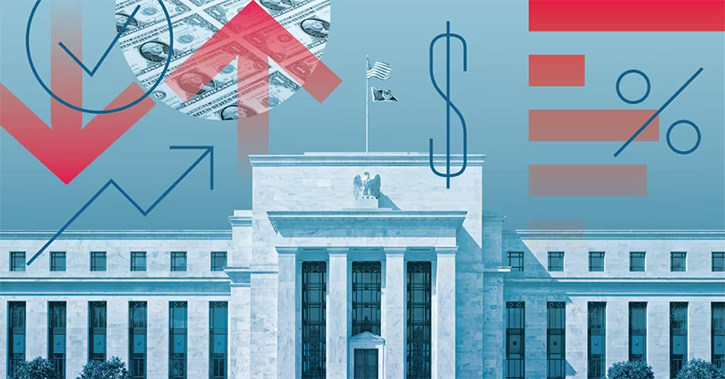Mark Noble: I think right now China has obviously had a lot of difficulties. It's not a great place to be invested. Starting January 1, 2016, you're down about 20% on both the Hong Kong and Chinese Mainland indices. That said, we actually think this is a great opportunity as opposed to a challenge to have a long-term buying entry point on China. So, when you are thinking about something like China, what you are thinking about is long-term investing. This isn't something that you play for three to five months expecting a rebound, which you might in something like the S&P 500. This is a long-term growth story. So, when you have a pullback like this of roughly 20%, technically a bear market, we think the valuations are actually looking quite attractive and I'm going to talk a little bit about why in a second. But right now looking at it, the valuations are, on Hong Kong, around 8 where the median has been more around 14, and similarly around a 14 median P/E valuation on the Mainland Chinese index, which is down around 10. So, historically, even from a historical valuation level, these are very attractive-looking valuations.
Secondly, one thing that people don't talk about is corporate earnings. Corporate earnings in China really haven't tailed off. So there has been a lot of economic data talking about a slowdown, talking about imports slowing down, exports slowing down, a little bit of potential devaluation of the yuan to boost imports. But actually from a cash flow perspective, a lot of these companies are doing quite well. So, we think it's very attractive.
This is the really interesting one because China, on a quarterly basis, puts out projections which some people question. You see, they are in the sort of 7% to 8% range. But independent analysis by both our parent company, Mirae Asset Global Investments, which is a huge Asian asset manager, as well as Goldman Sachs, put the long-term growth on China around 6.5%. So you expect the Chinese economy to grow about 6.5% this year. If we extrapolate that out, let's say, 10 to 15 years, what you are looking at is almost a doubling of the economy. So, even if the relative economic growth was to decline from, let's say, 6% to 4%, you are still looking at 50% to 75% growth over the next decade.
To give you some context, in the United States and Canada, we barely hit 2%. In fact, Canada is probably looking at about 1.2% to 1.5% growth this year. The Bank of Canada is trying to stimulate that to get that to 2%. But the rate of relative growth in China versus North America is astronomical and what's driving it is the growth of the Asian consumer, as opposed to the growth of the North American consumer. So, we're at a transition point. I think that's probably one of the reasons we've seen so much volatility in China, where we've gone from an economy in China which was industrializing and very much focused on bringing in commodities and other raw goods to build cities and roads, and is transitioning to one where the Asian consumer and, more particularly, the Chinese consumer is becoming the key driver of the economy, buying services and goods.
Chinese stock valuations, right now, from a historical standpoint are actually quite low. On average, they are roughly around 14 P/E over time. We're well below 10 right now. The one thing that people aren't really talking about with Chinese equities is the earnings. The earnings on the companies, surely, yes, they have slowed quite a bit, but they are still relatively attractive. There is still a lot of cash flow in these companies and they are able to access this very strong long-term growth trajectory of the Asian consumer. So, one of the things that's going to drive Chinese companies on a go-forward basis, and why their long-term prognosis is better than North America, is the fact that, on average, middle-class Chinese are now earning about US$9,000 to US$30,000 and the number of these middle-class Chinese has grown about almost twofold in the last five years. So, this is this transition that I'm talking about, where you’re going from being working-class to middle-class.
What happens when you go from working-class to middle-class is you have a whole range of services and industries that start to be supportive. So, if we think things like smartphones, we now have 650 million smartphone users in China. It's now going to be the largest auto consumer in the world. Other services, financial services, stock investing, insurance, education, healthcare, all of these industries start to be supportive when you have that expandable income coming in. So, even from a long-term cash flow perspective for these companies at these P/Es given the demographic market that they are serving, we think it's a very attractive entry point.
I think this is one of the most interesting points about China in that only about 7% of Chinese citizens are investors. If I was to compare that to Canada or the U.S., you are looking at about 30% in terms of the household balance sheet of what we own. So, 30% of assets in Canada and North America in particular are about 30% in equities. If I take that to China, you're looking at about 7% in equities and well over 75% in cash. So, this is an investing group that really by and large bought denominated bonds or cash instruments.
We're seeing a transition now where they are becoming equity investors, again, because of this huge transition from being working-class to middle-class. And that was actually the single biggest driver of growth in the first part of 2015. So, from January to July of 2015, we saw this huge increase in Chinese stock valuations, and that was largely a result of the emergence of these retail investors. Clearly, it has been a bumpy ride for them because things went far faster than I think that anyone thought it would last year. And we've seen that bubble burst a bit. But even if we go from, let's say, 7% to 15% in terms of investors, you're seeing effectively a doubling of the number of Chinese investors. So, just imagine that from a demographic standpoint, if you have another 400 million or 500 million investors come online in the next five to six years, supporting that local equity market.
We launched HCN in mid-January, so right in the midst of this sell-off, and it's a little bit different from other Chinese equity products in that it invests in Hong Kong-listed shares. So, a lot of the media attention that you've seen has been on something called the Chinese A-shares, and Chinese A shares are the domestic shares that only Mainland Chinese investors can purchase. And that's been a popular way to get access to that asset class, because there is a built-in premium, because you have a larger market of investors to access. But we were of the belief, actually, that using Hong Kong shares was a better way to get access to the Chinese growth story, because it's a much more developed equity market with much more stringent regulation. In addition, the companies that list on Hong Kong tend to be what they call the red chips, the biggest and best companies listed in China, and also our product has a dividend bias. So, we've actually created an index methodology which focuses on dividends. We're holding the 50 best dividend-paying stocks in Hong Kong, so the yield is about 5%. We think the combination of the quality of the shares listed on Hong Kong plus the dividend drastically reduces the volatility. In fact, we know it does from a historical basis, and it gives you a nice quality entry point into that long-term Chinese growth story.




















